Boroseagull
Well-known member
An interesting article in RBA this week that may interest a few on here;
In Britain and beyond, plenty of clubs have nicknames with an avian spin – from The Owls and The Eagles to The Swallows and The Storks. As both a long-time birder and fan of 'the beautiful game', I've often paid attention to the various bird-related nicknames or team names in football. Some make perfect sense, in terms of a certain bird and the team's location – but plenty don't! Most have interesting backstories, though, and this article will take a look at some of them.
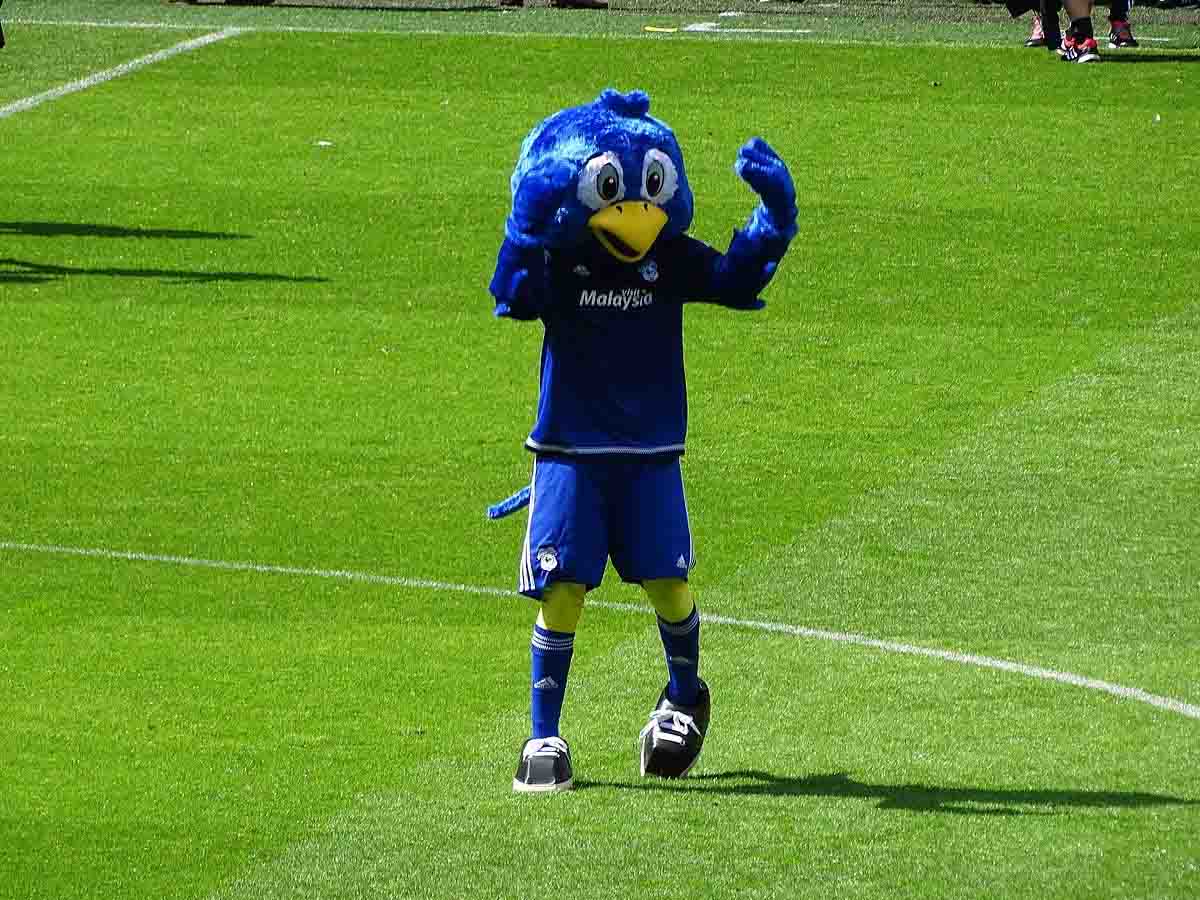
Cardiff City's mascot derives from the club's nickname, The Bluebirds. But why would a south Welsh club have an association with a North American species? (Jon Candy via Wikimedia).
The Magpies of Newcastle United lacks the geographic relatability, but is a fitting title for a club that plays in a distinctive black-and-white kit. The nickname and club colours are shared by Notts County in EFL League Two (the fourth tier of English football).
The final top-flight club with a bird connection is Crystal Palace, nicknamed The Eagles. Indeed, a Bald Eagle is often flown pre-match around Selhurst Park stadium. It's safe to say there aren't many eagles in Croydon, the south London borough that Crystal Palace is situated in, with the nickname derived from a mere rebranding exercise in 1973 when then-manager Malcolm Allison decided it'd sound better than the previous moniker of The Glaziers.
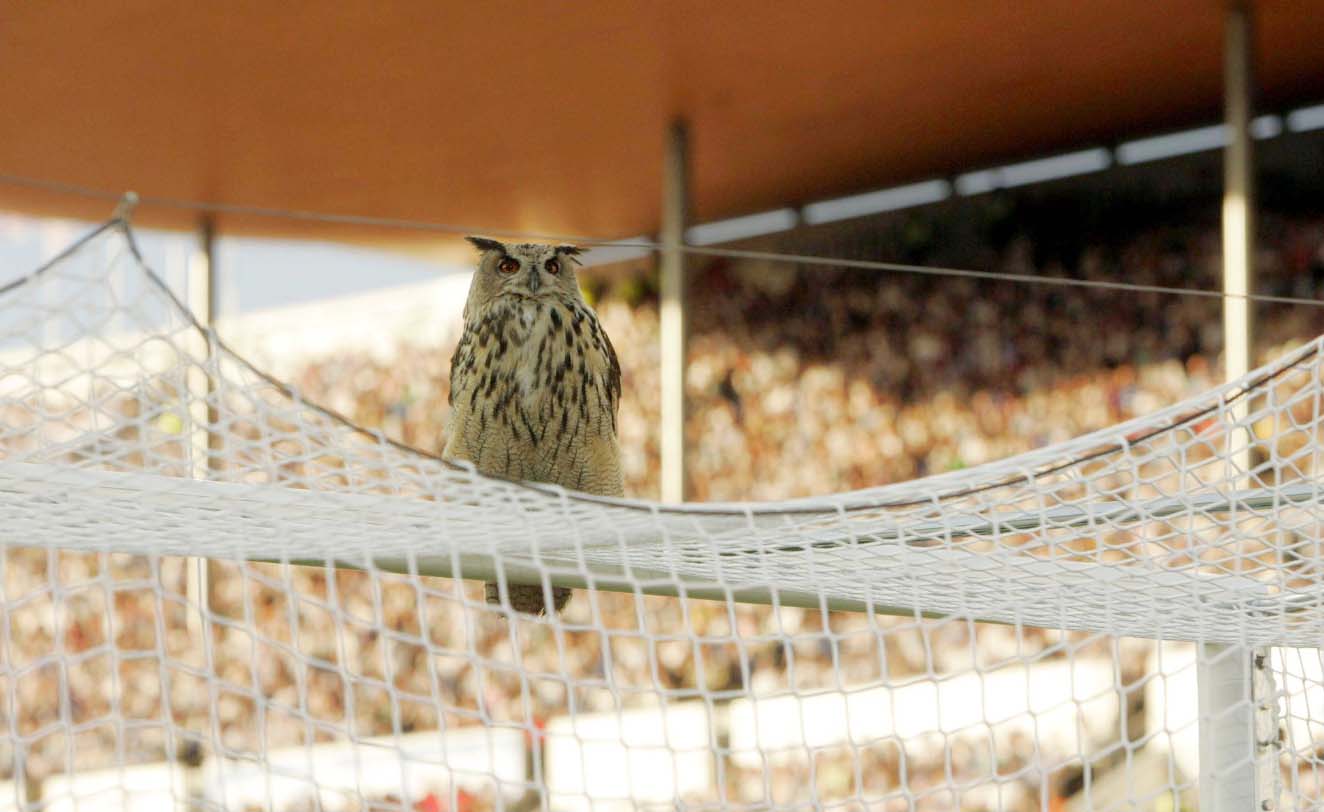
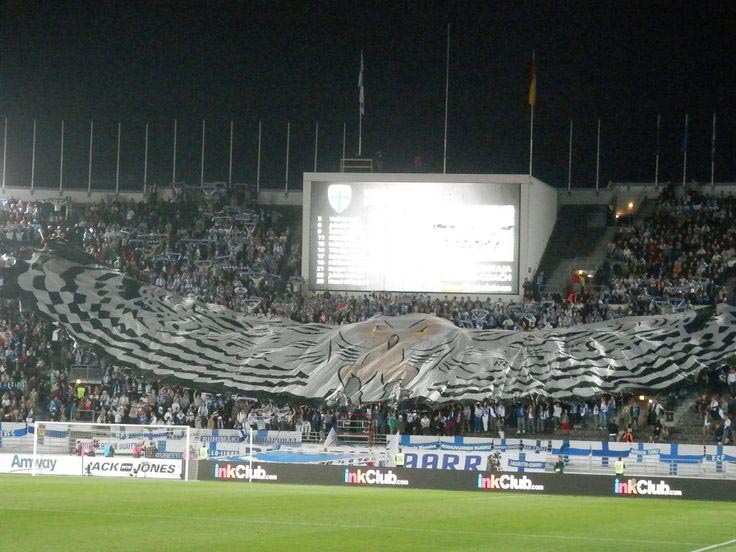
After a Eurasian Eagle-Owl made a surprise appearance at Finland’s Euro 2008 qualifier against Belgium (top), the men’s national side took on the nickname The Eagle-Owls. Fans have embraced this name, as shown by the banner (known as a tifo) depicting the species (Antti Aimo).
Allison was apparently inspired by Portuguese giants Benfica, nicknamed The Eagles and including an unspecified eagle species on its crest. The Eagles is rather popular as a footballing nickname, and is also that of Italian side, Lazio, and German outfit, Eintracht Frankfurt. Like Crystal Palace, they do fly Bald Eagles around their stadiums pre-game. In fact, when Klaus Toppmöller was manager of Eintracht Frankfurt in the 1993-94 Bundesliga season, he brought an eagle into the dressing room to try and motivate his players. A fifth-place finish and subsequent qualification for the UEFA Cup would suggest it worked!
OFC Pirin Blagoevgrad of the Bulgarian top flight is a little more real-world with its nickname of 'Little Eagles' – suitable given its location in what can be considered fine Lesser Spotted Eagle country in the rural south of Bulgaria. In the same nation, recent powerhouse and perennial champions Ludogorets Razgrad has got it all wrong, though, with its crest dominated by a magnificent Bald Eagle, a species found in the wild no closer than 6,000 km away!
Inaccuracies takes us back to Britain, and Wales, where Cardiff City of the EFL Championship is nicknamed The Bluebirds. Sure, the players wear blue shirts, and apparently a play called The Blue Bird that was performed in the city in 1911 was so popular that the name caught on and was adopted by the football team. But bluebirds are a distinctly North American group and, to compound matters, a Barn Swallow adorns the team's crest … I wonder how many Cardiff fans think the bird depicted on their club logo is a bluebird?
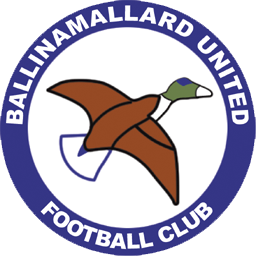
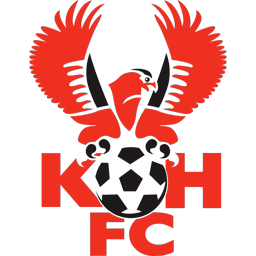
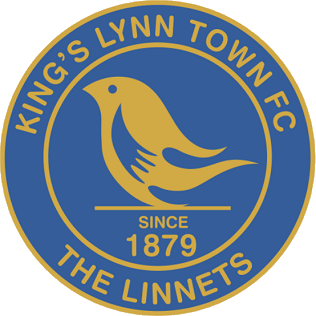
The lower leagues of the UK feature several clubs with a variety of bird-related nicknames, including The Mallards of Ballinamallard United (left), Kidderminster Harriers (centre) and The Linnets of King’s Lynn Town (right).
While Cardiff's nickname is partially derived from the colour of the players' strips, Norwich City's nickname – The Canaries – instigated the colour of its kit, a striking bright yellow and green. In the 16th and 17th centuries, large numbers of Dutch and Flemish Protestants arrived in the Norfolk town as they fled the Inquisition in the Catholic Low Countries, bringing their pet canaries with them. This is apparently why the club has the nickname and colours.
An image of a canary is unlikely to instil fear into the opposition – and neither is that of a robin. But curiously, no fewer than three professional teams in England are nicknamed The Robins: Bristol City, Cheltenham Town and Swindon Town. Unsurprisingly, they all wear red kits. And, thankfully, they are in separate divisions, thus avoiding a fixture that should surely be known as the 'Erithacus rubecula derby'.
West Bromwich Albion is widely known as The Baggies these days, but the club used to be called The Throstles. 'Throstle' was an old local name for Song Thrush, which was once apparently a common breeder around the club's stadium, The Hawthorns. This is a rare case of a football club's nickname being directly linked to a bird in the local area.
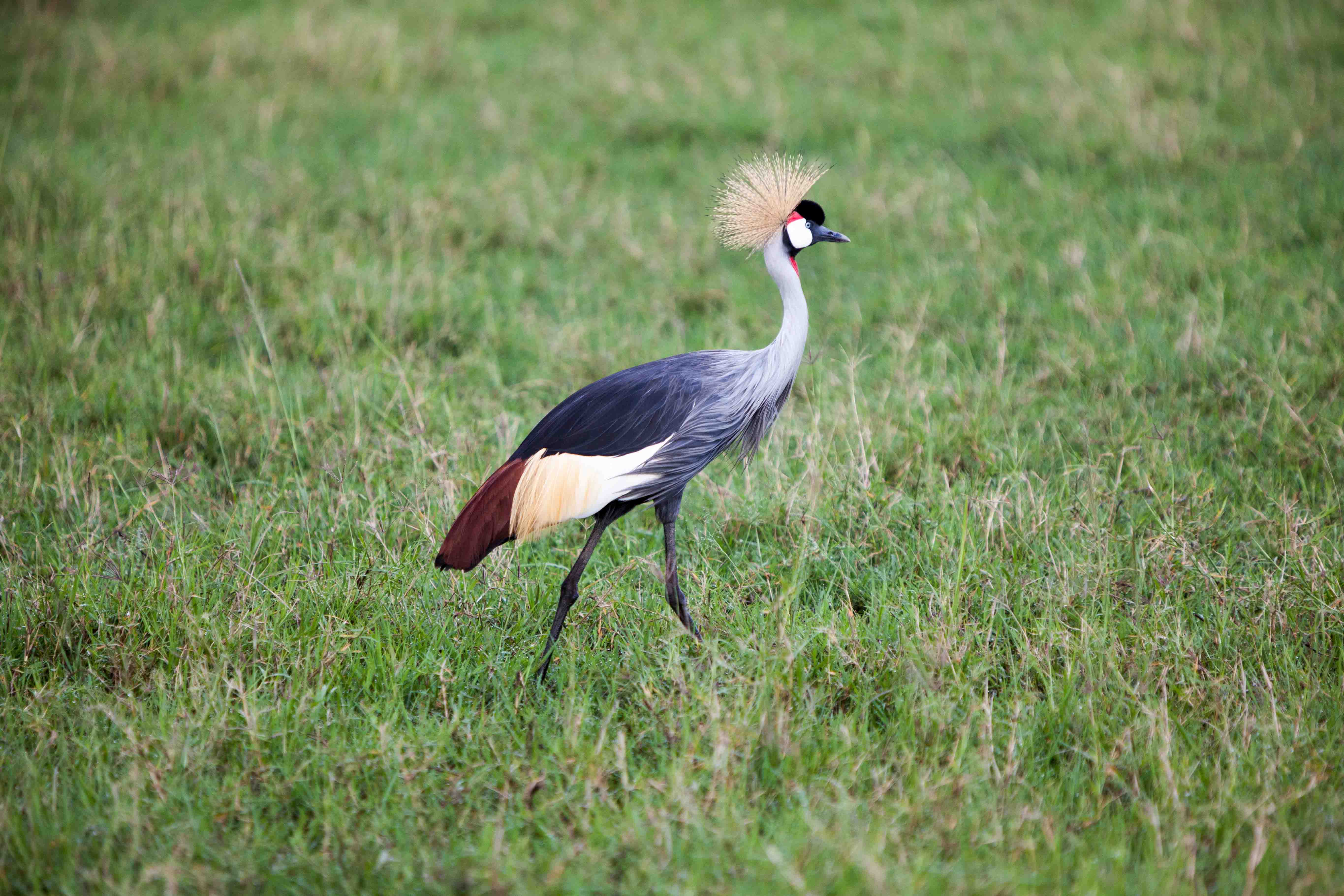
Birds can play a part in national identity, and thus extend their reach to national football teams. Grey Crowned Crane is the national bird of Uganda, even featuring on the county's flag, and so it's perhaps no surprise the men's football team is nicknamed The Cranes (Matt Bidulph).
The reality, though, is that many bird nicknames in the professional English game are not directly related to the teams. The Owls of Sheffield Wednesday came from the club's former ground, Owlerton Stadium, Swansea City's nickname of The Swans doesn't need explaining (and, yes, they play in white) – and we even have another case of The Bluebirds with Barrow of EFL League Two.
Dipping into English non-league (levels five and below) produces a slew of other avian nicknames: the Harriers of Kidderminster, The Linnets of King's Lynn Town, The Gulls of Torquay United, The Hawks of Havant and Waterlooville, The Ducks of Aylesbury United and even The Peacocks of Taunton Town, as well as yet further cases of The Robins (Altrincham), The Bluebirds (Chippenham Town), The Seagulls (Weston-super-Mare) and The Magpies (Chorley and Maidenhead United). There are many others, too, the further down the non-league pyramid you go.
One of my personal favourite nicknames is that of Ballinamallard United, currently in the Northern Irish second tier: The Mallards, of course, with the badge adorned by a glorious drake Mallard in flight. It certainly makes more sense as a moniker than that of compatriots Dungannon Swifts, whose emblem rather confusingly features a Barn Swallow.
Other rather unique names to be found across Europe include The Storks of Den Haag (White Stork has been a symbol of the city since the 1500s) and The Woodpeckers of Ascoli (the club's home city of Ascoli Piceno was founded by Sabine tribesfolk, who, according to folklore, were led westward from central Italy by a woodpecker).
The Falcons is also a popular nickname in Europe. Valur from Rejkjavík, Iceland, is named so due to the group of local boys responsible for forming the team seeing a falcon in flight when they were discussing names for the new club – presumably either a Gyr Falcon or Merlin.
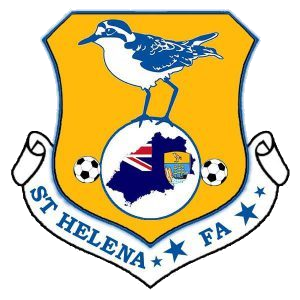
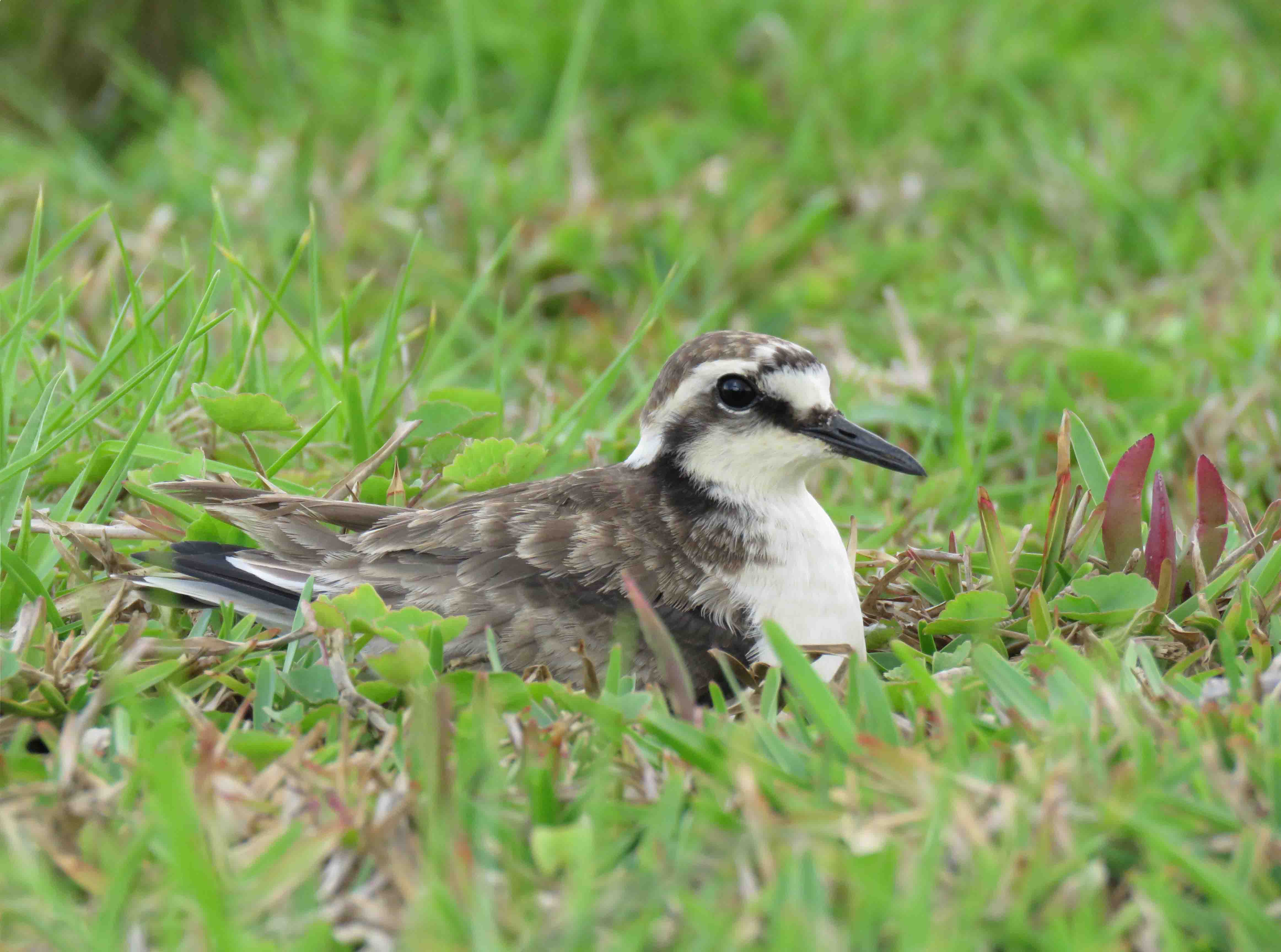
St Helena Plover is an eponymous endemic of the remote South Atlantic island. Fittingly, it features prominently on the national football team's crest (Keith Betton).
This is a rare case of a club nickname being based somewhat on reality, but for national football teams the relative accuracy in monikers is more prevalent – and there are some great examples. Perhaps the best is The Eagle-Owls of Finland, named due to the appearance of a Eurasian Eagle-Owl that landed on a goalpost during a Euro 2008 qualifier against Belgium at the Helsinki Olympic Stadium! The game was halted for six minutes as a result and the owl, given the nickname Bubi, was voted Helsinki's resident of the year by a journalists' association.
Montenegro's nickname, Hrabri Sokoli ('Brave Falcons'), is a direct reference to Red-footed Falcon, which seems slightly strange given the species is only a sporadic breeder in the country. There are various falcon nicknames in Asia, too, although these stem from falconry as opposed to a nod to a specific wild species.
African national football teams are well known for their animal-themed names and a few bird species are among them. The Cranes of Uganda is a logical one: Grey Crowned Crane is the national bird of the country and features on the national flag and coat of arms. The Dodos of Mauritius raises a smile, while Les Hirondelles of Burundi is a specific nod to Angola Swallow, a species native to the small country and many others in the Afrotropics.
Similarly niche is Samoa's nickname: The Manuamea, a local name for the endemic, bizarre and Critically Endangered Tooth-billed Pigeon. Also in the Pacific, New Caledonia is fittingly nicknamed Les Cagous or The Kagus – a nod to the iconic species endemic to the French overseas territory.
From this summary, it is clear there is little science behind the avian choices by football teams as their nicknames. On the rare occasion, however, a species has etched its way into the culture of a place and thus a team. These throwbacks to a connection between local or national identity and wildlife seem ever more lost in the modern day.
Bird names and the beautiful game
There is no sport like football. It's estimated that there are 240 million registered players globally, with audience participation in the billions. In December 2022, 1.5 billion people watched Argentina defeat France to win its third men's FIFA World Cup in Qatar. FIFA is the governing body of football and it recognises a minimum of 4,400 professional football clubs across the world – and beyond that there are thousands more amateur outfits. Many football clubs have rich history, often steeply engrained in the identity of a town or city, each with their traditional colours and nicknames.In Britain and beyond, plenty of clubs have nicknames with an avian spin – from The Owls and The Eagles to The Swallows and The Storks. As both a long-time birder and fan of 'the beautiful game', I've often paid attention to the various bird-related nicknames or team names in football. Some make perfect sense, in terms of a certain bird and the team's location – but plenty don't! Most have interesting backstories, though, and this article will take a look at some of them.

Cardiff City's mascot derives from the club's nickname, The Bluebirds. But why would a south Welsh club have an association with a North American species? (Jon Candy via Wikimedia).
The name game
In the current season (2023-24) of the Premier League, the top flight of English football, there are three teams with avian-themed nicknames. Brighton and Hove Albion's nickname is The Seagulls and couldn't really be more fitting (although I can almost hear birders retorting that "there's no such thing as a 'seagull'!") – European Herring Gulls are a wonderfully obvious presence in the city, and indeed on Brighton beach, where I can tell you from first-hand experience that safeguarding your chips is advised.The Magpies of Newcastle United lacks the geographic relatability, but is a fitting title for a club that plays in a distinctive black-and-white kit. The nickname and club colours are shared by Notts County in EFL League Two (the fourth tier of English football).
The final top-flight club with a bird connection is Crystal Palace, nicknamed The Eagles. Indeed, a Bald Eagle is often flown pre-match around Selhurst Park stadium. It's safe to say there aren't many eagles in Croydon, the south London borough that Crystal Palace is situated in, with the nickname derived from a mere rebranding exercise in 1973 when then-manager Malcolm Allison decided it'd sound better than the previous moniker of The Glaziers.


After a Eurasian Eagle-Owl made a surprise appearance at Finland’s Euro 2008 qualifier against Belgium (top), the men’s national side took on the nickname The Eagle-Owls. Fans have embraced this name, as shown by the banner (known as a tifo) depicting the species (Antti Aimo).
Allison was apparently inspired by Portuguese giants Benfica, nicknamed The Eagles and including an unspecified eagle species on its crest. The Eagles is rather popular as a footballing nickname, and is also that of Italian side, Lazio, and German outfit, Eintracht Frankfurt. Like Crystal Palace, they do fly Bald Eagles around their stadiums pre-game. In fact, when Klaus Toppmöller was manager of Eintracht Frankfurt in the 1993-94 Bundesliga season, he brought an eagle into the dressing room to try and motivate his players. A fifth-place finish and subsequent qualification for the UEFA Cup would suggest it worked!
Eagles galore
Spread further across the Continent, and more obscure spins on 'The Eagles' can be found. Take the Black Eagles of Turkish giants Beşiktaş, the Green Eagles of Hungary's biggest club Ferencváros and the Violet Eagles of Argeș Pitești in Romania – all eagle plumage colours that don't quite marry up to their locations (or at all) when scanning the Collins Bird Guide.OFC Pirin Blagoevgrad of the Bulgarian top flight is a little more real-world with its nickname of 'Little Eagles' – suitable given its location in what can be considered fine Lesser Spotted Eagle country in the rural south of Bulgaria. In the same nation, recent powerhouse and perennial champions Ludogorets Razgrad has got it all wrong, though, with its crest dominated by a magnificent Bald Eagle, a species found in the wild no closer than 6,000 km away!
Inaccuracies takes us back to Britain, and Wales, where Cardiff City of the EFL Championship is nicknamed The Bluebirds. Sure, the players wear blue shirts, and apparently a play called The Blue Bird that was performed in the city in 1911 was so popular that the name caught on and was adopted by the football team. But bluebirds are a distinctly North American group and, to compound matters, a Barn Swallow adorns the team's crest … I wonder how many Cardiff fans think the bird depicted on their club logo is a bluebird?



The lower leagues of the UK feature several clubs with a variety of bird-related nicknames, including The Mallards of Ballinamallard United (left), Kidderminster Harriers (centre) and The Linnets of King’s Lynn Town (right).
While Cardiff's nickname is partially derived from the colour of the players' strips, Norwich City's nickname – The Canaries – instigated the colour of its kit, a striking bright yellow and green. In the 16th and 17th centuries, large numbers of Dutch and Flemish Protestants arrived in the Norfolk town as they fled the Inquisition in the Catholic Low Countries, bringing their pet canaries with them. This is apparently why the club has the nickname and colours.
Canaries all over the world
Somewhat surprisingly, this nickname has travelled widely in football circles. As of the 2023-24 season, there are no fewer than six top-flight teams in Europe nicknamed The Canaries (or variants of), including Turkish powerhouse Fenerbahçe and Lillestrøm in Norway. Of course, none of these teams are in the Azores, Canary Islands or Madeira, which are the only places in the Western Palearctic that wild Atlantic Canaries reside.An image of a canary is unlikely to instil fear into the opposition – and neither is that of a robin. But curiously, no fewer than three professional teams in England are nicknamed The Robins: Bristol City, Cheltenham Town and Swindon Town. Unsurprisingly, they all wear red kits. And, thankfully, they are in separate divisions, thus avoiding a fixture that should surely be known as the 'Erithacus rubecula derby'.
West Bromwich Albion is widely known as The Baggies these days, but the club used to be called The Throstles. 'Throstle' was an old local name for Song Thrush, which was once apparently a common breeder around the club's stadium, The Hawthorns. This is a rare case of a football club's nickname being directly linked to a bird in the local area.

Birds can play a part in national identity, and thus extend their reach to national football teams. Grey Crowned Crane is the national bird of Uganda, even featuring on the county's flag, and so it's perhaps no surprise the men's football team is nicknamed The Cranes (Matt Bidulph).
The reality, though, is that many bird nicknames in the professional English game are not directly related to the teams. The Owls of Sheffield Wednesday came from the club's former ground, Owlerton Stadium, Swansea City's nickname of The Swans doesn't need explaining (and, yes, they play in white) – and we even have another case of The Bluebirds with Barrow of EFL League Two.
Dipping into English non-league (levels five and below) produces a slew of other avian nicknames: the Harriers of Kidderminster, The Linnets of King's Lynn Town, The Gulls of Torquay United, The Hawks of Havant and Waterlooville, The Ducks of Aylesbury United and even The Peacocks of Taunton Town, as well as yet further cases of The Robins (Altrincham), The Bluebirds (Chippenham Town), The Seagulls (Weston-super-Mare) and The Magpies (Chorley and Maidenhead United). There are many others, too, the further down the non-league pyramid you go.
One of my personal favourite nicknames is that of Ballinamallard United, currently in the Northern Irish second tier: The Mallards, of course, with the badge adorned by a glorious drake Mallard in flight. It certainly makes more sense as a moniker than that of compatriots Dungannon Swifts, whose emblem rather confusingly features a Barn Swallow.
Parakeets and woodpeckers
Los Periquitos – The Parakeets – is the somewhat unusual nickname of Espanyol, the 'other' team in the city of Barcelona that was recently relegated from the Spanish top flight. The origin of this name is unclear, with one theory being that parakeets gathered around the club's old Estadio de Sarriá home where fans would feed them before games. Whatever the case, the name certainly befits a team from a city that supports no fewer than three parakeet species on Category C of the Spanish list (Mitred, Monk and Ring-necked Parakeets).Other rather unique names to be found across Europe include The Storks of Den Haag (White Stork has been a symbol of the city since the 1500s) and The Woodpeckers of Ascoli (the club's home city of Ascoli Piceno was founded by Sabine tribesfolk, who, according to folklore, were led westward from central Italy by a woodpecker).
The Falcons is also a popular nickname in Europe. Valur from Rejkjavík, Iceland, is named so due to the group of local boys responsible for forming the team seeing a falcon in flight when they were discussing names for the new club – presumably either a Gyr Falcon or Merlin.


St Helena Plover is an eponymous endemic of the remote South Atlantic island. Fittingly, it features prominently on the national football team's crest (Keith Betton).
This is a rare case of a club nickname being based somewhat on reality, but for national football teams the relative accuracy in monikers is more prevalent – and there are some great examples. Perhaps the best is The Eagle-Owls of Finland, named due to the appearance of a Eurasian Eagle-Owl that landed on a goalpost during a Euro 2008 qualifier against Belgium at the Helsinki Olympic Stadium! The game was halted for six minutes as a result and the owl, given the nickname Bubi, was voted Helsinki's resident of the year by a journalists' association.
Montenegro's nickname, Hrabri Sokoli ('Brave Falcons'), is a direct reference to Red-footed Falcon, which seems slightly strange given the species is only a sporadic breeder in the country. There are various falcon nicknames in Asia, too, although these stem from falconry as opposed to a nod to a specific wild species.
African national football teams are well known for their animal-themed names and a few bird species are among them. The Cranes of Uganda is a logical one: Grey Crowned Crane is the national bird of the country and features on the national flag and coat of arms. The Dodos of Mauritius raises a smile, while Les Hirondelles of Burundi is a specific nod to Angola Swallow, a species native to the small country and many others in the Afrotropics.
Similarly niche is Samoa's nickname: The Manuamea, a local name for the endemic, bizarre and Critically Endangered Tooth-billed Pigeon. Also in the Pacific, New Caledonia is fittingly nicknamed Les Cagous or The Kagus – a nod to the iconic species endemic to the French overseas territory.
From this summary, it is clear there is little science behind the avian choices by football teams as their nicknames. On the rare occasion, however, a species has etched its way into the culture of a place and thus a team. These throwbacks to a connection between local or national identity and wildlife seem ever more lost in the modern day.

